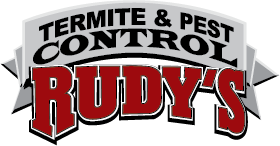With increased temperatures comes an increase in the activity of various pests seeking shelter, food, and breeding grounds. From buzzing bees to pesky mosquitoes, warm season pests can become a nuisance for residents and businesses alike. In this guide, we’ll explore some of the most common warm season pests found in the Coachella Valley, including white flies, bees, ants, flies, mosquitoes, spiders, and caterpillars. Understanding these pests and their behavior can help you take proactive measures to protect your home and property.
White flies:
White flies are tiny, winged insects that feed on the sap of plants, causing damage to leaves and reducing plant vigor. In the Coachella Valley, the sweet potato white fly (Bemisia tabaci) is a common species that can infest a variety of plants, including ornamentals, vegetables, and citrus trees. These pests can be challenging to control due to their rapid reproduction and resistance to many insecticides.
Bees:
Bees play a vital role in pollinating crops and wildflowers, but they can also become a nuisance when they build nests in or near homes and structures. In the Coachella Valley, Africanized honey bees (Apis mellifera scutellata) are a common species that can pose a threat to humans and pets if disturbed. It’s essential to exercise caution around bee nests and seek professional assistance for safe removal.
Ants:
Ants are highly adaptable insects that can invade homes and businesses in search of food and shelter. In the Coachella Valley, Argentine ants (Linepithema humile) and odorous house ants (Tapinoma sessile) are two common species that can form large colonies and become difficult to control. Keeping indoor and outdoor areas clean and free of food debris can help prevent ant infestations.
Flies:
Flies are not only a nuisance but also carriers of disease-causing pathogens. In the Coachella Valley, common fly species include house flies (Musca domestica) and fruit flies (Drosophila melanogaster). These pests are attracted to decaying organic matter and can quickly become a problem, especially during the warmer months. Proper sanitation and waste management are essential for fly control.
Mosquitoes:
Mosquitoes are a significant concern in the Coachella Valley due to their ability to transmit diseases such as West Nile virus and Zika virus. Common mosquito species found in the area include Aedes aegypti and Culex quinquefasciatus. Mosquito breeding sites, such as stagnant water sources, should be eliminated to reduce mosquito populations and minimize the risk of mosquito-borne diseases.
Spiders:
While most spiders are beneficial predators that feed on insects, some species can pose a threat to humans with venomous bites. In the Coachella Valley, black widow spiders (Latrodectus spp.) and desert recluse spiders (Loxosceles spp.) are two species of concern. To reduce the risk of spider encounters, maintain a tidy and clutter-free environment both indoors and outdoors.
Caterpillars:
Caterpillars are the larval stage of moths and butterflies and can cause damage to plants and crops by feeding on leaves and stems. In the Coachella Valley, caterpillars such as the tomato hornworm (Manduca quinquemaculata) and the cabbage looper (Trichoplusia ni) can be problematic for gardeners and farmers. Monitoring plants for signs of caterpillar infestation and employing appropriate control measures can help protect your green space.
As the temperatures rise in the Coachella Valley, it’s essential to be aware of the potential presence of warm season pests and take proactive measures to prevent infestations. By understanding the behavior and habits of common pests like white flies, bees, ants, flies, mosquitoes, spiders, and caterpillars, you can better protect your home, property, and health. If you encounter pest problems beyond your control, don’t hesitate to seek professional pest control assistance for effective and sustainable solutions.

